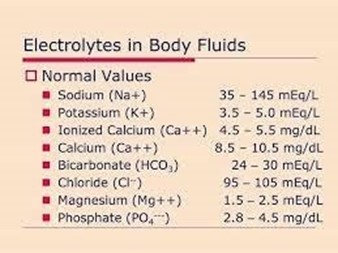The practical nurse (PN) identifies which client behaviors that can increase the client's risk for hypertension? (Select all that apply.)
Drinks a protein supplement for breakfast every day.
Eats eight ounces of nonfat yogurt for lunch daily.
Regularly selects salty snacks to eat in the evening.
Walks briskly for two miles every day after work.
Chews tobacco while playing baseball every weekend.
Correct Answer : C,E
C. Regularly selects salty snacks to eat in the evening: Consuming excessive amounts of sodium (found in salty snacks) can increase blood pressure and contribute to the development of hypertension.
E. Chews tobacco while playing baseball every weekend: Tobacco use, including chewing tobacco, is associated with an increased risk of hypertension and other cardiovascular diseases.
The other choices are incorrect because they do not directly contribute to an increased risk of hypertension:
A. Drinks a protein supplement for breakfast every day: Consuming a protein supplement for breakfast does not necessarily increase the risk of hypertension. However, it is important to note that some protein supplements may contain added sodium, which can contribute to hypertension if consumed in excessive amounts.
B. Eats eight ounces of nonfat yogurt for lunch daily: Eating nonfat yogurt is generally considered a healthy food choice. However, unless the yogurt is high in added sodium, it would not significantly increase the risk of hypertension.
D. Walks briskly for two miles every day after work: Regular exercise, such as brisk walking, is generally beneficial for cardiovascular health and can help lower blood pressure. It is unlikely to increase the risk of hypertension.
Nursing Test Bank
Naxlex Comprehensive Predictor Exams
Related Questions
Correct Answer is ["C","E"]
Explanation
C. Regularly selects salty snacks to eat in the evening: Consuming excessive amounts of sodium (found in salty snacks) can increase blood pressure and contribute to the development of hypertension.
E. Chews tobacco while playing baseball every weekend: Tobacco use, including chewing tobacco, is associated with an increased risk of hypertension and other cardiovascular diseases.
The other choices are incorrect because they do not directly contribute to an increased risk of hypertension:
A. Drinks a protein supplement for breakfast every day: Consuming a protein supplement for breakfast does not necessarily increase the risk of hypertension. However, it is important to note that some protein supplements may contain added sodium, which can contribute to hypertension if consumed in excessive amounts.
B. Eats eight ounces of nonfat yogurt for lunch daily: Eating nonfat yogurt is generally considered a healthy food choice. However, unless the yogurt is high in added sodium, it would not significantly increase the risk of hypertension.
D. Walks briskly for two miles every day after work: Regular exercise, such as brisk walking, is generally beneficial for cardiovascular health and can help lower blood pressure. It is unlikely to increase the risk of hypertension.
Correct Answer is C
Explanation
When a client reports experiencing numbness and tingling in the extremities, it is crucial for the practical nurse (PN) to prioritize reporting the client's electrolyte levels to the healthcare provider. Electrolytes are essential minerals that help maintain the balance of fluids in the body and enable proper nerve and muscle function. Imbalances in electrolyte levels can lead to neurological symptoms, including numbness and tingling.
Options a, b, and d are not the correct priorities to report in this situation:

Whether you are a student looking to ace your exams or a practicing nurse seeking to enhance your expertise , our nursing education contents will empower you with the confidence and competence to make a difference in the lives of patients and become a respected leader in the healthcare field.
Visit Naxlex, invest in your future and unlock endless possibilities with our unparalleled nursing education contents today
Report Wrong Answer on the Current Question
Do you disagree with the answer? If yes, what is your expected answer? Explain.
Kindly be descriptive with the issue you are facing.
